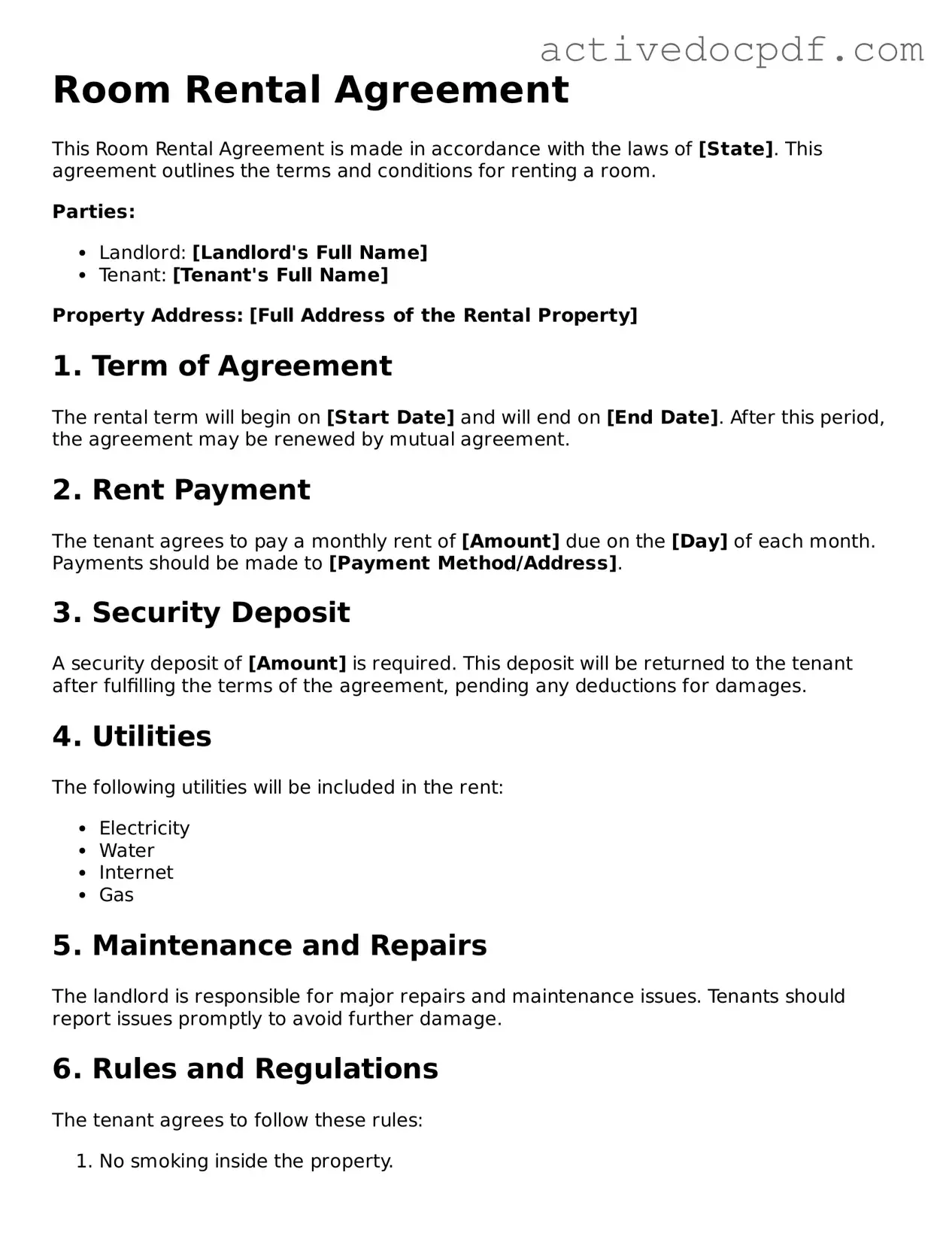What is a Room Rental Agreement?
A Room Rental Agreement is a legal document that outlines the terms and conditions under which a room is rented from a landlord or property owner. This agreement protects both the renter and the landlord by clearly stating the rights and responsibilities of each party. It typically includes details such as the rental amount, duration of the lease, and rules regarding the use of the property.
What should be included in a Room Rental Agreement?
When creating a Room Rental Agreement, it’s essential to include several key elements:
-
Names of the parties:
Clearly identify the landlord and the tenant.
-
Property description:
Specify the address and details of the room being rented.
-
Rental terms:
Outline the rental amount, payment due dates, and acceptable payment methods.
-
Duration of the lease:
State whether the agreement is for a fixed term or month-to-month.
-
Rules and regulations:
Include any house rules, such as noise restrictions or pet policies.
How can I modify a Room Rental Agreement?
If changes are needed in a Room Rental Agreement, both parties must agree to the modifications. To do this, follow these steps:
-
Discuss the desired changes openly with the other party.
-
Draft an amendment that clearly outlines the changes being made.
-
Both parties should sign and date the amendment to ensure it is legally binding.
Keep in mind that any changes should be documented in writing to avoid misunderstandings in the future.
What happens if a tenant violates the Room Rental Agreement?
If a tenant violates the terms of the Room Rental Agreement, the landlord has several options. Initially, it’s advisable for the landlord to address the issue directly with the tenant. Open communication can often resolve misunderstandings. If the violation persists, the landlord may issue a formal notice outlining the breach and any corrective actions required. Depending on the severity of the violation, further actions may include:
-
Issuing a warning.
-
Charging late fees if rent is unpaid.
-
Initiating eviction proceedings in extreme cases.
Each situation is unique, so it’s crucial to consult the agreement and local laws for specific guidance.
Can a Room Rental Agreement be terminated early?
Yes, a Room Rental Agreement can be terminated early, but the process depends on the terms outlined in the agreement itself. Common reasons for early termination include:
-
Mutual agreement between the landlord and tenant.
-
Violation of terms by either party.
-
Significant changes in circumstances, such as job relocation.
It’s important to follow the agreed-upon procedures for termination, which may require written notice. Always refer to the specific terms in the agreement to ensure compliance with any notice periods or penalties.
